The scent of freshly cut neem wood lingers in the air as fine dust settles on the floor of a small workshop in Amroha, Uttar Pradesh. A wooden block, still rough at the edges, spins on a hand-operated machine. Beside it, an artisan leans forward, his hands steady, eyes sharp. Every curve he shapes will decide the depth of the tabla’s voice — a sound that will someday fill homes and concert halls alike.
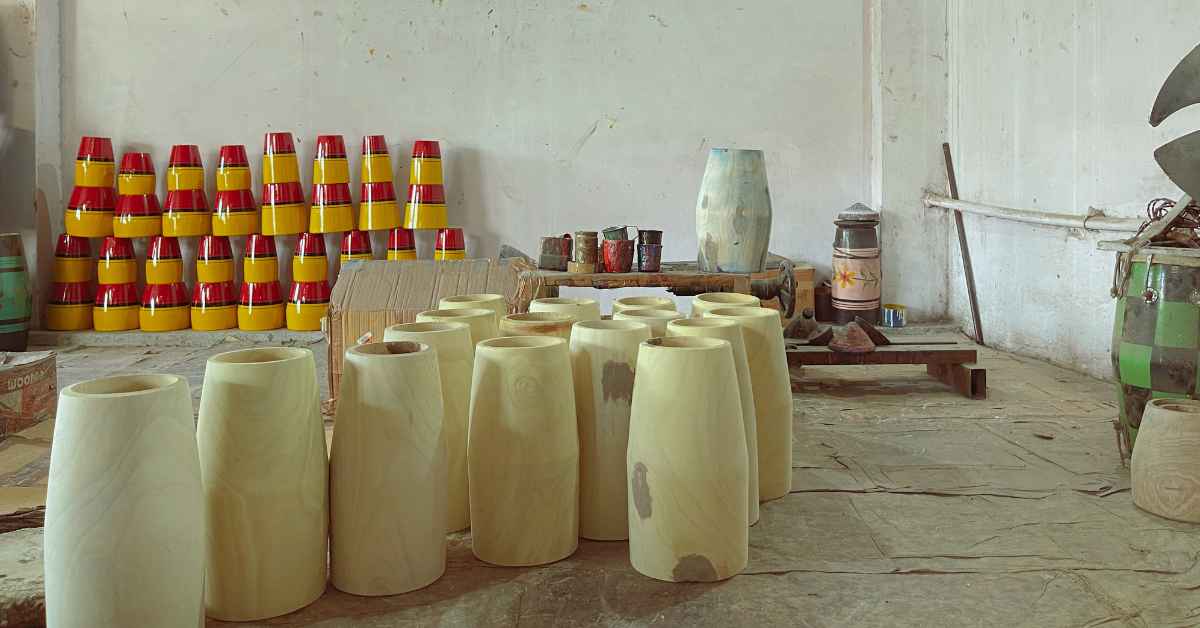
This is not a factory. There are no conveyor belts here. Each instrument is a labour of love, born of skill passed down through generations.
The craft that echoes through generations
Amroha’s connection with the tabla runs deep. Locals believe this craft came to the region centuries ago with musicians and artisans drawn by its natural resources — strong woods like mango and sheesham, and goatskin, both perfect for shaping an instrument that balances strength with delicacy.
Over time, tabla-making became more than work; it turned into a family legacy.

“My grandfather, Nandram Ji, started making tablas in 1950,” shares Rajiv Kr Prajapati, owner of Ram Musical Handicrafts and Chairman of the Dholak Hastkala Association. “My father continued the work, and when I joined, it was with the same love for music and the same goal — to keep this craft alive.”
Rajiv’s workshop is one of many in Amroha, yet his role extends beyond his family business. As the head of the association, he speaks for a community of artisans, voicing their hopes and challenges.
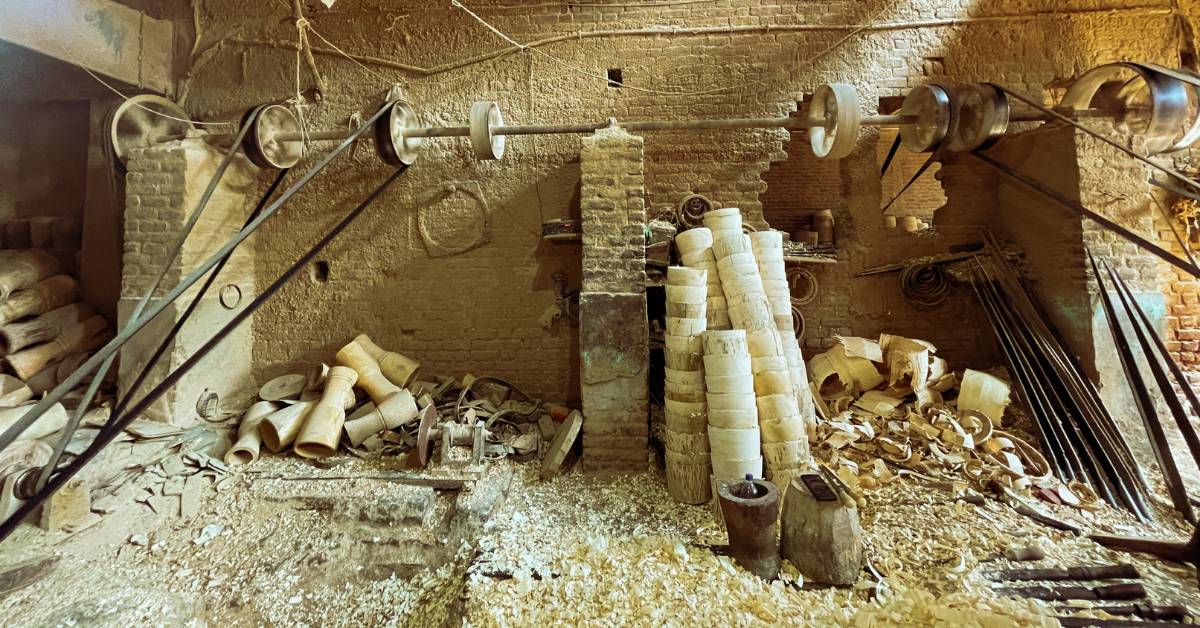
“We may work in small spaces, but what we make carries India’s soul,” he says with humble pride.
This photo essay, captured by photographer Tatheer Zahra, documents this centuries-old craft in all its detail.
A tradition under pressure — and a glimmer of hope
Keeping this craft alive is no small feat. In Amroha, where time seems to move to the rhythm of the tabla, modern-day challenges loom large.
“One major issue is the irregular electricity supply,” Rajiv explains. “Power cuts are unpredictable, and that affects our ability to work efficiently.” For an art form that demands precision, these interruptions can be costly.
Another challenge is sourcing quality raw material. “The kind of wood we need — strong, seasoned, and sound — is becoming harder to find. We often have to look beyond Amroha, to East UP or Uttarakhand,” he adds.
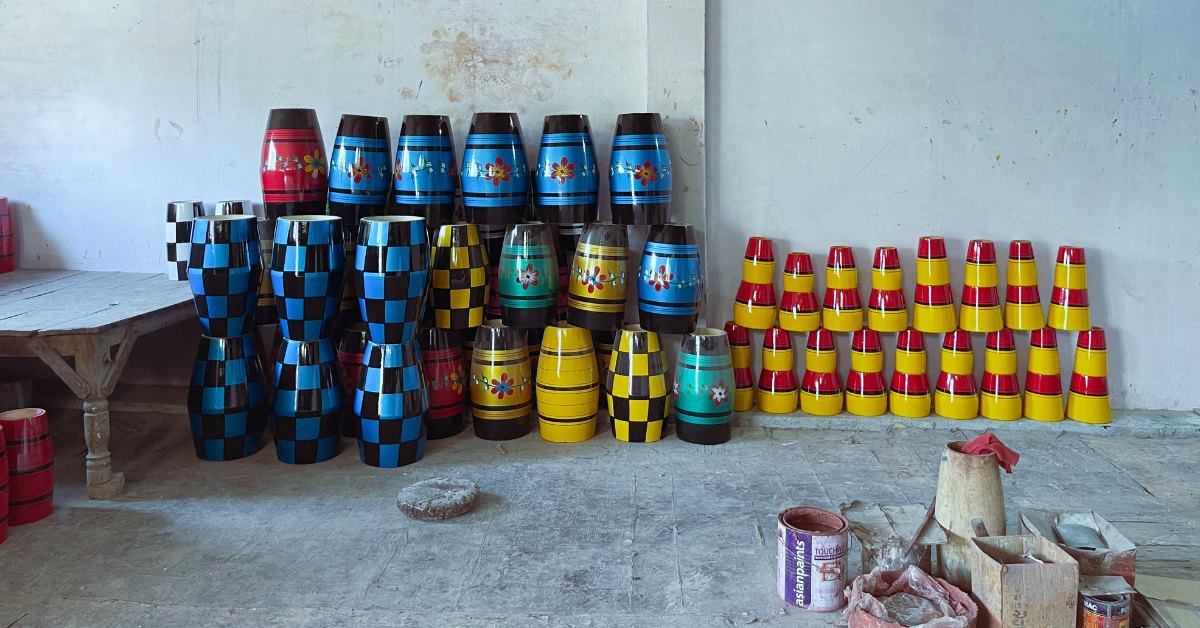
Despite this, Rajiv remains hopeful. “The tabla has been around for centuries, and it will continue to be relevant,” he says. A growing appreciation for handmade instruments and digital platforms gives artisans confidence that their work will keep finding new admirers.
How a tabla is born — from wood to melody
Making a tabla is more than craft; it is patience, precision, and tradition coming together. Inside Rajiv’s workshop, the process unfolds like a ritual — unchanged for decades and captured in frames by Tatheer Zahra.
1. Selecting the right wood
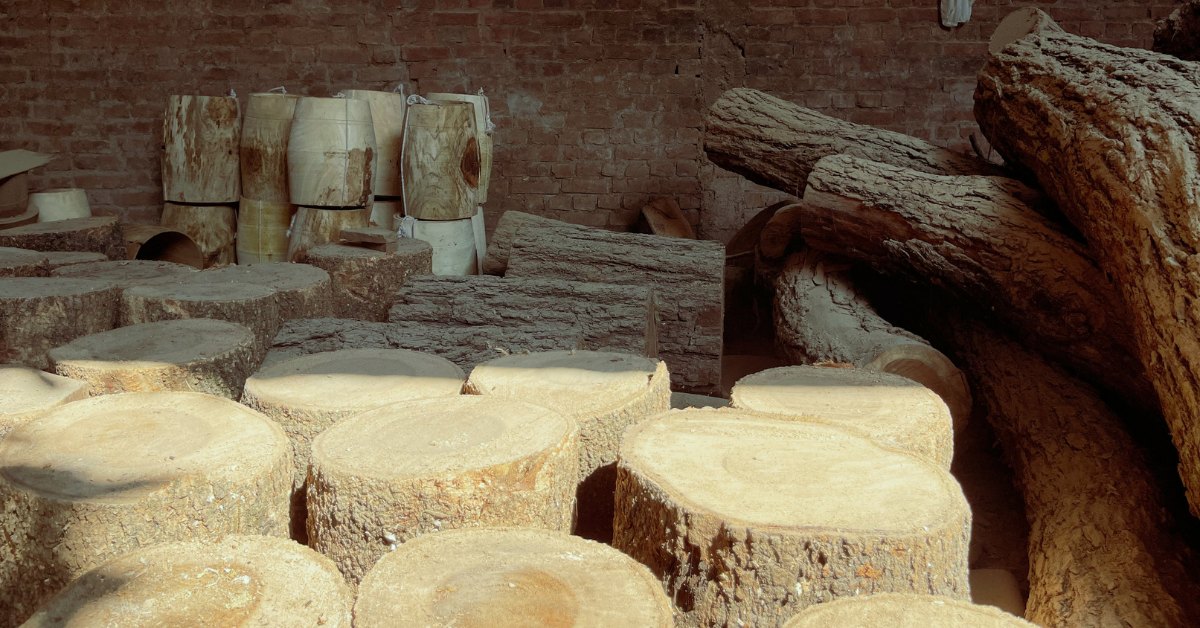
It all begins with timber. Neem, sheesham, or rosewood is handpicked for its strength and resonance. “If the wood is not right, the sound will never be perfect,” says an artisan, running his fingers over a freshly cut log.
2. Preparing the skin
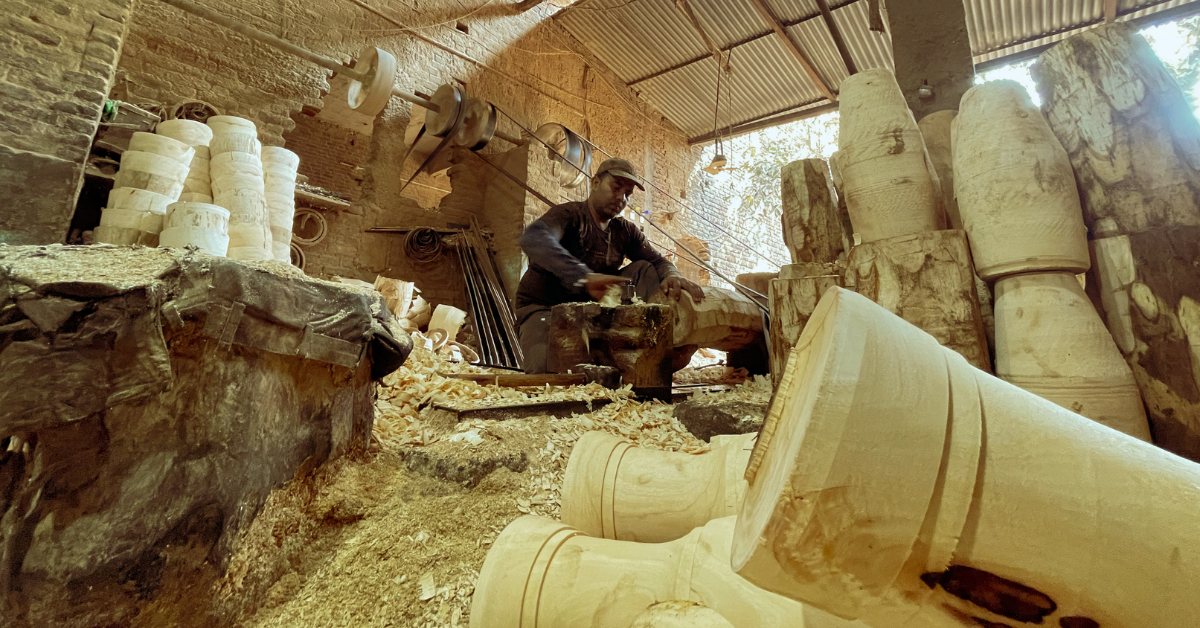
Next comes goatskin, prized for its durability and tonal clarity. According to Rajiv, they source it from a licensed meat factory or local meat shop, ensuring it is obtained as a by-product rather than through direct harm to animals. The skin is cleaned, soaked, and cut into precise circles, slightly larger than the drumhead. These pieces will soon become the tabla’s voice.
3. Shaping the wooden body

On a locally developed machine called badi kherat, the wood is carved into a flawless cylindrical shape. Any imbalance here can distort the sound — making this step one of the most critical.
4. Forming the rim (gajara)

Thick hide strips are secured at the base and top, creating a rim for tension. Holes are punched along the edge to thread leather straps later.
5. Applying the syahi
The black patch you see on a tabla is called the syahi. Made from iron filings and gum, it’s carefully applied to the centre of the skin. This step gives the tabla its signature tonal depth.
6. Assembling and tuning
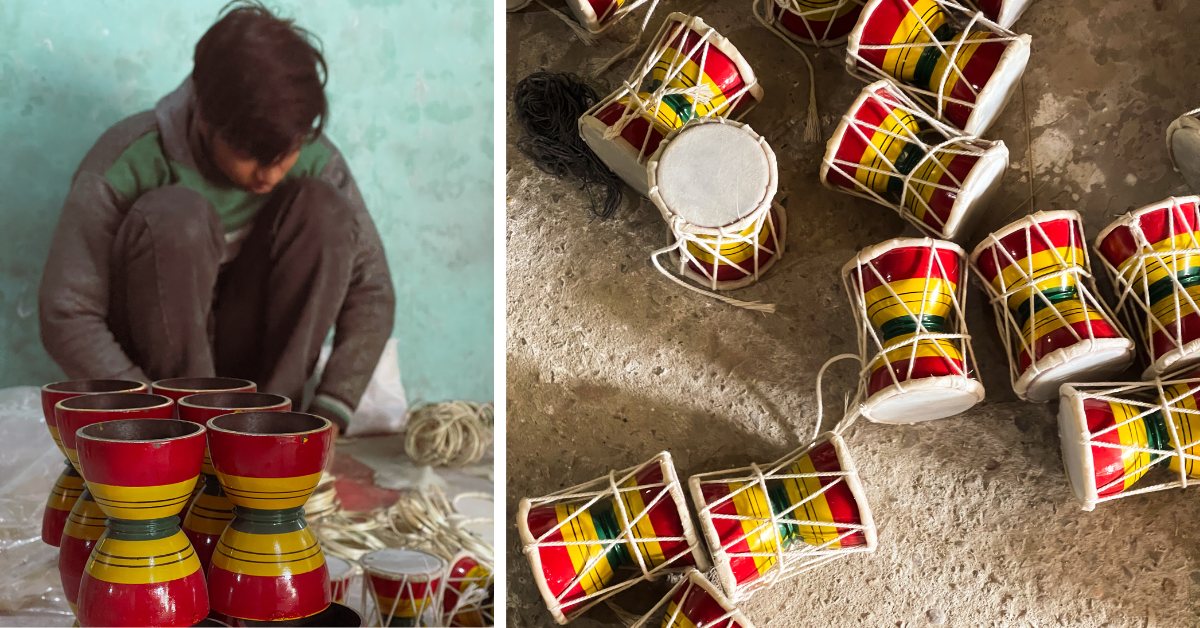
The drumhead is stretched over the wooden shell, tied with leather straps, and tightened gradually. Wooden dowels are added to help tune the instrument to perfection.
7. The final touch

Once tuned, the tabla is polished and sometimes adorned with painted designs. It is tested for sound — and when the first beat rings clear, the artisan’s work comes alive.
The beat that holds a legacy
In an age of factory-made instruments and mass production, the tablas of Amroha remind us what handmade truly means. Every groove, every note, carries a story — of families who have kept this craft alive for generations despite the odds.

“This is more than a business for us,” Rajiv says. “It is our identity. When someone plays our tabla on stage, we feel proud — because that sound began in our hands.”
Today, these instruments travel far beyond Uttar Pradesh, finding homes in music schools, concert halls, and living rooms across the world. For artisans like Rajiv, that journey is proof that their tradition is not fading — it’s adapting, surviving, and creating music that still moves hearts.
All images courtesy Tatheer Zehra
No comments:
Post a Comment